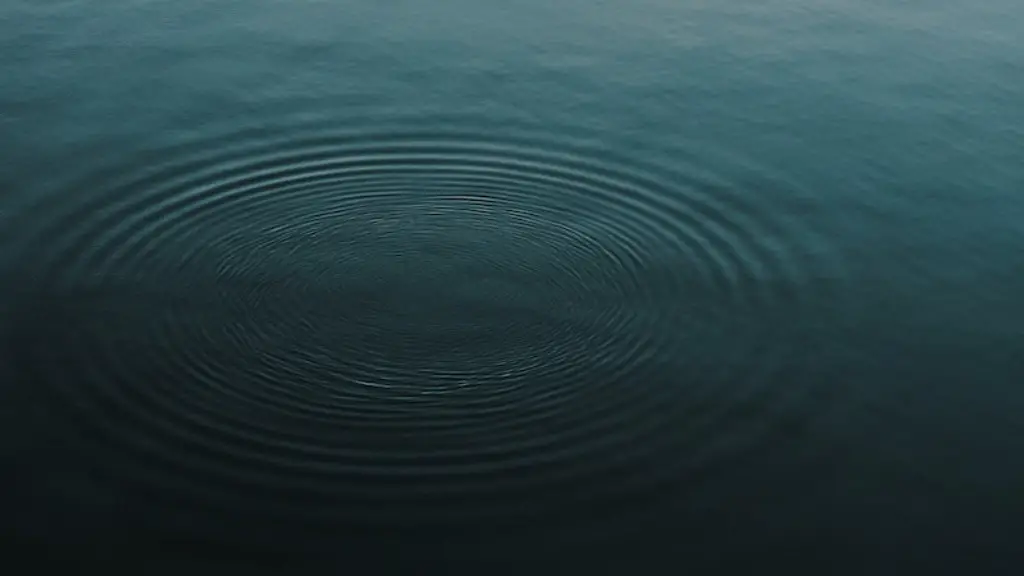Ingredients of Lake Michigan’s Water
Lake Michigan contains freshwater from the Great Lakes region, from the western part of Michigan through the border states of Wisconsin, Illinois, Indiana, and Michigan. It is the only one of the five Great Lakes not to be interconnected to the Atlantic Ocean. Water in Lake Michigan consists of tributaries, groundwater, and lake water. The lake water is the largest contributor to the lake’s water content, but the groundwater and tributary flows also play a large role in the overall makeup of Lake Michigan’s water.
Runoff and Agriculture
Agricultural runoff is one of the biggest sources of pollution entering Lake Michigan. Nutrient-rich fertilizers and manure runoff have contributed to an excess of nutrients, which leads to algal blooms that reduce water quality. Human wastes, such as untreated sewage, are another source of pollution and can lead to the overgrowth of bacteria and other harmful microorganisms. A wide range of industries around the lakeshore of Lake Michigan, including steel and paper mills, contribute to the pollution in the lake, as well.
Heavy Metals
The transportation industry has added to the levels of certain pollutants in Lake Michigan water, in particular heavy metals such as mercury, lead, nickel, and copper. These pollutants can come from leaded gasoline and dust kicked up by motor vehicles and by coal-fired power plants. The burning of fossil fuels releases sulfur dioxide into the air which then enters the lake. This sulfur dioxide leads to increased acidity levels in the water, making it more toxic to aquatic life.
Surface-Water Contamination
The quality of surface water in Lake Michigan has been consistently degraded over the years due to the addition of numerous contaminants. Contaminants such as PCBs, DDT, and dioxin have been found in the lake’s surface waters, primarily from industrial sources. These contaminants are extremely toxic to aquatic life and can cause long-term health problems for the fish and other animals that live in the lake.
Water Clean Up Efforts
In recent years, conservation efforts have been made to clean up the lake and to reduce the amount of pollution in its waters. Land use and land management practices have been established to reduce agricultural runoff. Air pollution regulations have been enacted by the US Environmental Protection Agency to cut back on emissions from power plants and motor vehicles. In addition, wastewater treatment plants have been put in place to reduce the amount of human waste that enters the lake.
Lake Michigan Water Quality Indices
The US Environmental Protection Agency (EPA) uses various methods to measure water quality in Lake Michigan. These methods include the Total Suspended Solids (TSS) test and the Dissolved Oxygen (DO) test. The TSS test measures the amount of particulate matter in the lake, such as sediment, clay, and algae. The DO test measures the amount of oxygen available to aquatic life in the lake. In addition, the EPA uses the Chlorophyll-a Index (CAI) which measures the amount of algae in the lake. The CAI is an especially important indicator of water quality since high levels of algae can reduce the amount of oxygen available to aquatic life.
Conclusion
Lake Michigan is considered to be in a relatively good state of health, but there is still work to be done to ensure its future health. Years of pollution and neglect have caused significant damage to the lake’s water quality, which is reflected in the water quality indices tested by the EPA. Conservation efforts have been made to reduce the amount of pollutants entering the lake and to improve the overall water quality. With continued efforts, Lake Michigan can be protected and continue to provide invaluable resources to the region.
Analyzing Available Measurements
Measuring the water quality of Lake Michigan is done by conducting regular sampling of the lake’s water and by using a range of water quality indices such as the Total Suspended Solids (TSS) test, the Chlorophyll-a Index (CAI), and the Dissolved Oxygen (DO) test. Data gathered from these tests provide a good indication of the overall health of the lake and the level of contamination present in its waters.
Strategies to Improve Water Quality
To improve the water quality in Lake Michigan, it is important to reduce the amount of pollution entering the lake. This can be done by enacting EPA regulations to cut back on emissions from motor vehicles and power plants, by improving agricultural practices to reduce the amount of agricultural runoff entering the lake, and by creating better wastewater treatment plants to reduce the amount of human waste entering the lake.
Current Barriers to Clean Water
Despite efforts to reduce the amount of pollutants entering Lake Michigan, there are still some barriers preventing the lake from achieving clean water status. One of the biggest barriers is the widespread use of outdated water treatment systems which fail to adequately remove pollutants from the water. Another is the fact that certain areas of the lake are not monitored closely enough, which allows pollutants to remain in the waters for longer periods of time.
Raising Awareness about Clean Water
Awareness about the importance of protecting and preserving the clean water of Lake Michigan has grown in recent years. Non-profit organizations and government bodies have taken action to inform the public about the importance of clean water. Education campaigns and outreach initiatives have been launched to spread the message of clean water conservation and to encourage people to take action to preserve the lake’s water quality.


